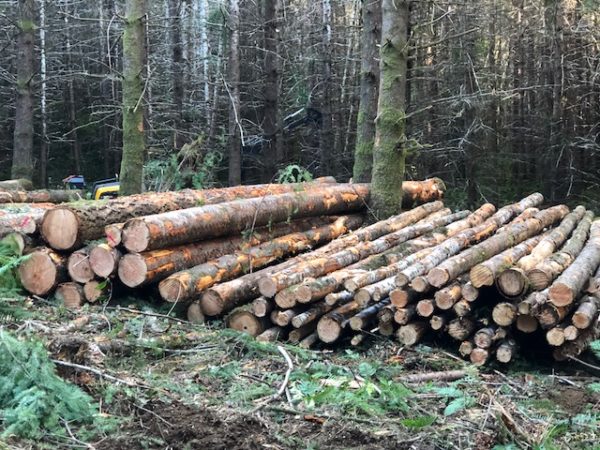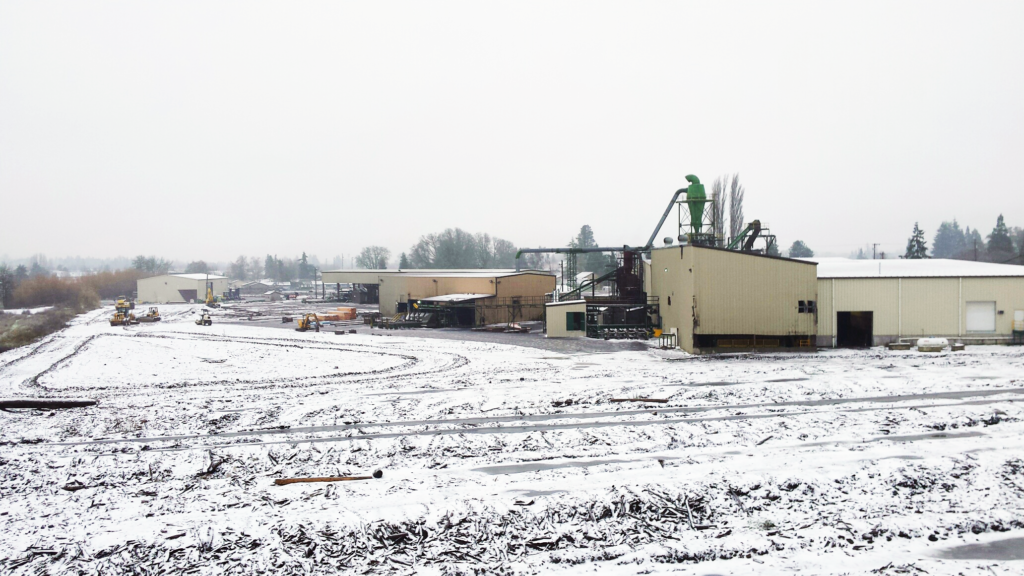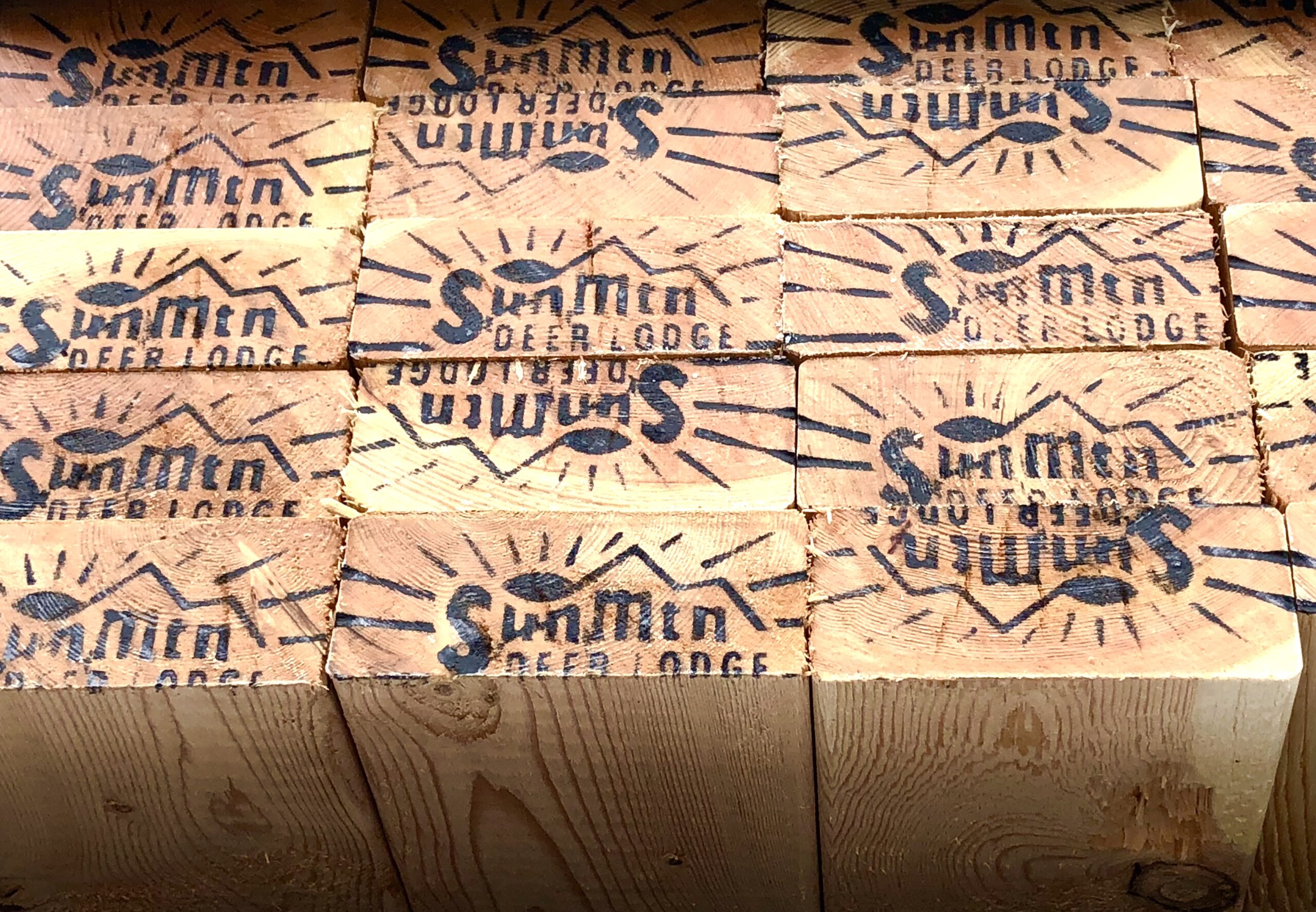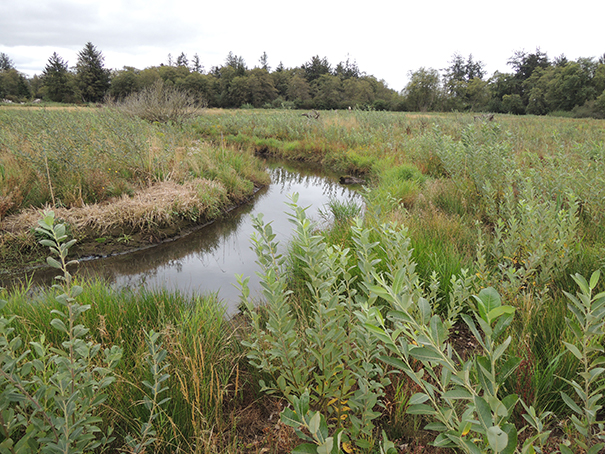Last week, the Hampton team was honored to participate in the 28th Annual Community Leaders Forestry Tour, hosted by the Clatsop Forestry & Wood Products Economic Development Committee. With the theme of ‘Working Forests — More than Just Trees’, the tour was composed of nearly a hundred community members, including Oregon Department of Forestry (ODF) representatives, political candidates, members of the media, local interest groups and county residents looking to learn more about Oregon’s forest management practices. Despite forestry being a legacy industry in Oregon, we have found that many people still need more information on how forests are managed today. This event served that purpose.
First stop: Hampton’s Big Creek Tree Farm
At our Big Creek forest outside of Knappa, OR, retired Hampton forester, Bud Henderson, discussed work on the property to improve overall watershed health and habitat access for native salmon runs. We discussed how important collaborative efforts were for sustainable forestry, and Bud walked the group through a particularly extensive project he shepherded while with Hampton; the restoration of a section of Big Creek. This section of Big Creek had historically flooded and a previous landowner had diverted the stream to avoid washouts on their logging road. Unfortunately, directing all of the stream water through a narrow, deep channel had the unintended consequence of allowing the water flow rate to increase faster than most fish could swim upstream, creating a “velocity barrier” to accessing upstream habitat.
This diversion was done at a time before landowners had access to the wealth of scientific research that forms the backbone of modern forestry practices, and would never be done today. With that in mind, Hampton decided to redirect the creek into its original channel and restore the floodplain. The stream restoration, along with the construction of a new enforced bridge, restored access for salmon and other fish to 11 miles of previously inaccessible habitat and decreased potential for roadway usage to negatively impact stream health. This first stop on the tour served as a catalyst for ongoing discussions about sustainable forestry practices.
Second Stop: Clatsop State Forest
 Our second stop included a live demonstration of a cut-to-length thinning operation on a stand in the ODF-managed Clatsop State Forest. Assistant District Forester, Ty Williams, explained the important role thinning plays in increasing forest health, by selectively removing struggling trees from young, dense stands. Through active management practices such as this commercial thinning operation, ODF is able to both grow large, healthy trees for eventual harvest and provide important wildlife habitat by creating a less dense, more accessible understory. The commercial thinning operation was being conducted by ODF contractor Miller Timber, and tour patrons had the opportunity to witness the highly skilled operators using cutting-edge Ponsse machinery. This leg of the tour provided opportunity to discuss both technological advances in forestry, as well as the industry’s commitment to providing sustainable employment within the community.
Our second stop included a live demonstration of a cut-to-length thinning operation on a stand in the ODF-managed Clatsop State Forest. Assistant District Forester, Ty Williams, explained the important role thinning plays in increasing forest health, by selectively removing struggling trees from young, dense stands. Through active management practices such as this commercial thinning operation, ODF is able to both grow large, healthy trees for eventual harvest and provide important wildlife habitat by creating a less dense, more accessible understory. The commercial thinning operation was being conducted by ODF contractor Miller Timber, and tour patrons had the opportunity to witness the highly skilled operators using cutting-edge Ponsse machinery. This leg of the tour provided opportunity to discuss both technological advances in forestry, as well as the industry’s commitment to providing sustainable employment within the community.
Third Stop: Northrup Creek Horse Camp:
This year’s tour culminated at ODF’s Northrup Creek Horse Camp, a portion of the working state forest dedicated to recreation. Here, Reforestation Manager, Charley Moyer, discussed ODF’s commitment to quick reforestation with site appropriate species composition. Charley also reiterated ODF’s responsibility to ensure the forest is sustainably managed for multiple uses. The horse camp is a setting that marries state forest management with community engagement, and members of the tour echoed the importance of that visibility.
We were proud to be again included in the annual Community Leaders Forestry Tour and share several of our forest stewardship projects with the community. Events like these demonstrate the synergies among public, private and non-profit forest management and the importance of sharing that information with the community.
By Jed Arnold, Community Outreach and Stewardship Coordinator at Hampton Lumber



